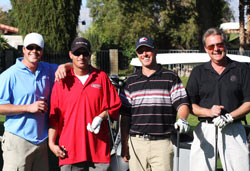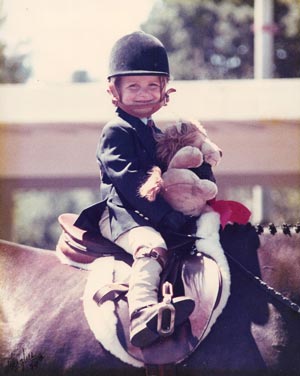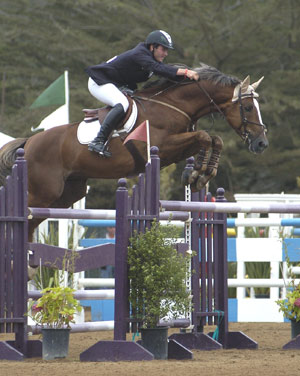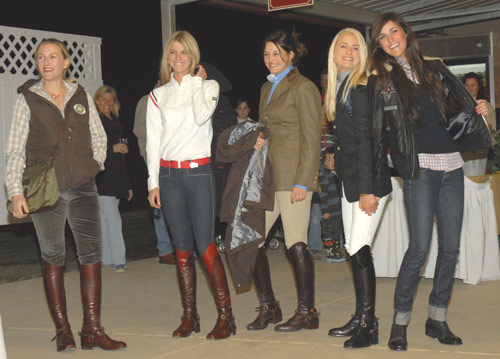By Kathy Keeley
One of the challenges for many horse show moms is working with your rider’s school. As riders get more involved in this sport, it often means more and more missed days of school in order to practice, travel and compete in horse shows. It is up to the parents and the rider to manage school attendance, grades and workload in order to make it all work successfully.

and showing. Pictured here competing
on Black Tie Affair at HITS Arizona.
Horse show families have a number of options that range from home schooling to private schools to finding public schools that will be supportive. With the exception of home schooling which gives you complete control over school and horse showing, parents find themselves having to work through the school issues every semester. Parents take on the role of informing, managing and sometimes begging for school administration and teachers to understand what this sport requires. Some schools have competitive horse show leagues which makes the job so much easier but these are few and far between. More likely you are left on a teacher by teacher basis to explain and negotiate for the time off to compete in horse shows.
For many riders, horse showing adds an element of stress to their academic lives and creates time management skills that would wow most corporate managers. It also impacts their social lives with missed dances, events and school parties on those weekends when they are away showing. We fit in the prom two years in a row dressing at the horse show with a crew of people helping with hair and makeup at the motel, a long drive to the dance and an early night to be ready for 8 am classes the next morning!
Home Schooling
Show parents have several options. Some people decide that the level of talent, commitment and goals are such that home schooling is the only option. Home schooling provides flexibility for the rider and a way to compete while mandating course curriculum without physical class attendance. It takes good cooperation between parent and child and a certain type of student to benefit.
Private School
Others search for the private school that will work with you to manage the missed classes or allow you to skip gym classes for an early dismissal each day to ride and to qualify your horse showing as your sport. We got my daughter’s school to count her riding as a sport and she received gym credit for high school. I wrote a long memo to the headmaster providing information on the sport, practice requirements, national championship goals, riding apparel as the uniform and the various rules within horse showing. The credit gave her either a study hall or the last class period of the day to leave for a lesson.
Public School
A third option is to work with your current school to manage days off for your show schedule in order to minimize total missed days. Some administrators can refuse to recognize horse shows for excused absences so the rider has to calculate each missed day very carefully to avoid penalties. It takes planning your show schedule and working with the trainer and rider to manage expectations related to showing.
ShowMom Tips:
Communicate
Communication with the administration and the individual teachers is very important. You have to do both every year and cannot expect administration to speak for the teachers. Build your case by putting together your information on the overall sport, time commitments, show goals, the full schedule, the benefits of showing and other information that might help non-horse show people understand the sport.
Communicate periodically with teachers on two levels. Provide both background information on horse shows and specific information on your child’s schedule and time commitments. As background information, write about results, opportunities, qualifying events and other pointers on horse shows in general. Provide information on your travel time, the hours spent in lessons, packing and general preparation.
Inform
I created an email list of teachers each semester and sent out two or three news-related emails on my daughter’s show experience with some personal stories. I provided background information on a show – how many exhibitors, how many classes my daughter showed in, ribbons and points if we were chasing points for Indoors and other tidbits like the long days, the number of practice sessions and whatever else gave them a flavor for the experience. The newsletters were three or four paragraphs – short but informative. I also sent quick thank-you notes describing a great show or a very challenging weekend.
Set a Precedent with Teacher-Student
Find allies in administration, school counselors, or other teachers to help balance those teachers who will not be supportive. There were always times my daughter would come home in tears because of a teacher’s remarks or denial of a delayed or early test request. She had to learn to communicate the importance of her riding goals and learn to manage difficult teachers and situations. School took precedence and she maintained a near 4.0 average all through high school as her part of the bargain. Her work ethic and grades helped sway many teachers.
Set realistic goals for the semester that will depend on the school schedule, the academic course work, and the number of missed days safely allowed. Being realistic and managing the schedule takes coordination with the trainer and some logistical management on your part. It takes a plan that the rider can understand and support with a smile rather than resentment. Loading up on shows during school breaks and during the summer helps manage the schedule. It is important to pick shows that avoid the times around finals and midterms.
Our role as parents is to keep a perspective on horse showing to balance out the time commitments. We don’t want to increase the stress during high school and should try to maintain a schedule that supports whatever family values and expectations they have concerning education and academic performance.
Good luck and remember to be a savvy show mom!
Find more tips and articles at ShowMom.com.

 I was curious about the impact that Joe Fargis had on Kevin’s career and training methods.
I was curious about the impact that Joe Fargis had on Kevin’s career and training methods. The cavalletti poles should get your horse’s hind end up underneath himself, the crossrail encourages straightness, and trotting magnifies your horse’s jump as well as the rider’s balance. After landing off of the crossrail, your horse needs to respond to your leg by going up into your hand. Having the distance already set up to the combination makes it easier.
The cavalletti poles should get your horse’s hind end up underneath himself, the crossrail encourages straightness, and trotting magnifies your horse’s jump as well as the rider’s balance. After landing off of the crossrail, your horse needs to respond to your leg by going up into your hand. Having the distance already set up to the combination makes it easier.
 HOW MUCH: No entry fee. The Relay class is limited to the first 12 teams that sign up and submit their entries in the HITS Show Office.
HOW MUCH: No entry fee. The Relay class is limited to the first 12 teams that sign up and submit their entries in the HITS Show Office.